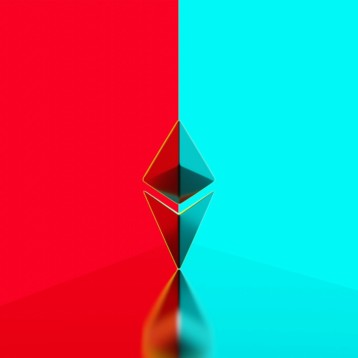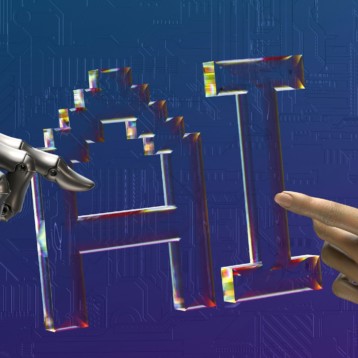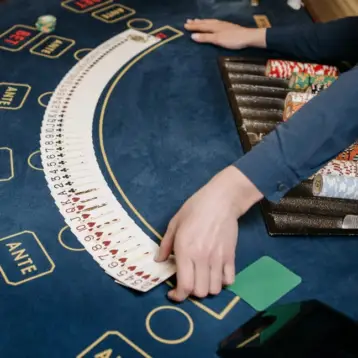The Race
|
The Challenge began after all 11 robot cars took off successfully. The Intelligent Vehicle Systems (IVS) from Ford (as well as Delphi and Honeywell) almost crashed into a concrete road block just as it left the starting point but was given another chance and was able to continue safely. The competition continued without a problem for a while until the Ben Franklin (Little Ben) robot car from the Pennsylvania and Lehigh Universities stopped for a long time in the middle of a turn and was almost disqualified. Eventually, and after an “all stop” situation where all the cars on the course where told to pause, the car was able to continue on its own.
The Annie WAY team from Germany got stuck in a roundabout for a long period of time before successfully moving along. All cars were doing well on the initial off-road part of the competition until the second German team – CarOLO – got stuck in the sand and had to recive some human assistance in digging itself out. The UCF team’s Knight Rider got stuck in a junction for a long time but eventually managed to continue. A few minutes later, the Skynet robo-car from Cornell almost crashed into another car and then crossed to the opposite side of the road and remained there for a few minutes before it finally continued. An interesting event happened when the IVS car stopped and created a small traffic jam, which led to its disqualification and to the disqualification of team Annie WAY. Almost at the same time, the huge Oshkosh Truck, called TerraMax, nearly drove straight into a building and was the third car to be disqualified.
The next close call happened between Little Ben and the Knight Rider who created another “all pause” situation. Both cars eventually moved ahead successfully. The MIT team, which up to this point had a very good ride, encountered some problems in the sandy part of the track, where the vehicle stopped and started several times before clearing that section. Shortly afterwards, Odin the robotic car from the VictorTango team of Virginia Tech became the first car to finish Mission 1 (out of three missions).
|
The Knight Rider became the fourth to finished the competition after a bizarre incident where it drove into a building and was disqualified. A few minutes later, the Stanford team “Junior” robot was the second vehicle to finish Mission 1. Clearing the sandy section of the track, the MIT car found itself in a head to head confrontation with the CarOLO. This confrontation ended when a human judge moved the MIT car backwards before letting it to continue the race without being disqualified.
Mission 2 started when both Odin and Stanford’s “Junior” preformed a successful parking maneuver in an empty parking garage and continued on their way. In the meantime two other teams: Little Ben followed up by the Pittsburgh robot called “Boss” finished mission 1 and successfully started mission 2.
Still in mission 1 the MIT rover entered a second head to head confrontation with the CarOLO which ended with the CarOLO being disqualified. At the same time Cornell’s Skynet robo-car became the fifth car to finish mission 1 followed by MIT who was able to finish mission 1 after several more mishaps along the way.
After a long and fairly uneventful drive all the reaming robotic cars rushed through mission 2 and again VictorTango became the first to finish the mission (after performing a swift park and drive procedure in a specific pre-picked parking spot) and move on to the third and final mission, followed again by Stanford’s “Junior” and Pittsburgh’s “Boss” robots.
Mission 3 started with a small mishap for VictorTango which strayed away from the road but was able to quickly fix itself and continue its drive. The following incident was a bigger one with MIT car physically hitting Cornell’s Skynet. Surprisingly both cars were unharmed and continued on their way without and significant damage to their systems. After this accident all the remaining competitors finished the second mission, brining the total number of competitors in the third and final mission to six.
On the last mission Junior increasingly became the dominant competitor with a very impressive performance reaching the finish line first. The Boss from Carnegie Mellon University became the second to reach the finish line with VictorTango/Odin reaching the line third. Reaching the finish line fourth was “Little Ben” a good long time after the first three. the last two to cross the line were the robots from MIT (Talos) followed by Cornell’s Skynet.
Some Background
|
This year’s challenge took place at the urban military-training facility located on the former George Air Force Base in Victorville, California. DARPA officials say this location simulates the type of terrain in which American forces operate when deployed overseas. The race track looked a lot like a suburban neighborhood, complete with houses, traffic circles, street signs, trees, and sidewalks, in addition to sandy desert-like parts and human driven cars in a realistic scenario. This was the third competition since DARPA’s first Grand Challenge event, which was held in the Mojave Region in 2004.
The first challenge was somewhat discouraging – no team could be named the winner and awarded the cash prize, since none of the robots succeeded in completing the final 240-kilometer challenge due to various failures along the way. The robotic car with the best result that year, designed by the “red team” from Carnegie Mellon University in Pittsburgh, went off course after completing just 12 kilometers of the track. The car got caught on the berm, causing the rubber on its front wheels to catch fire.
DARPA’s second Grand Challenge was held the following year and was considered a great success. Five vehicles reached the finish line after completing the entire 212-kilometer course. “Stanley”, a robotic Volkswagen designed by a team from Stanford University, was the first official winner of the challenge, after successfully completing the race in six hours, 53 minutes and 58 seconds. Following the 2005 race, DARPA Director Tony Tether said, “These vehicles haven’t just achieved world records, they’ve made history.”
While in previous challenges the only criterion by which the vehicles’ performances were measured was a set time limit in which the robots had to complete the course, this year’s participants were tested on road ethics as well, and were required to drive according to the traffic laws obeyed in California. For each traffic fault committed during the course, time penalties were added to the vehicle’s elapsed time. Furthermore, the cars were tested on speed and safety, and could be disqualified if damaging their surroundings in any way.
As the technological pieces begin falling into place, experts say it will probably take two or three decades before autonomous vehicles are introduced to the consumer market. The industry is facing many challenges, and engineers say better sensors and more powerful processors are required. The development of driverless cars proceeds step by step: in recent years, much attention has been drawn to cars that park themselves, and these are already offered for sale. Sensors that can detect objects in close proximity to the vehicle, and “lane-control” systems that alert the driver when attempting to execute a dangerous pass to an adjacent lane, are already in production.
The third Grand Challenge brings DARPA a step closer to its goal, declared in a 2001 Congressional mandate that resulted in the establishment of the program – “It shall be a goal of the Armed Forces to achieve the fielding of unmanned, remotely controlled technology such that . . . by 2015, one-third of the operational ground-combat vehicles are unmanned.”
TFOT has recently covered MIT’s entry for the competition – the “Robocar”, which you can find here.
You can read a detailed article about the Grand Challenge, published by TFOT here.
You can find detailed information about this year’s event on the DARPA Grand Challenge official website.
Further discussion of DARPA’s 2007 Urban Challenge can be found here (TFOT’s forums).













